SpeakableCassie’s Ominous October Spookathon: Part 3
In October last year, I wrote a couple of articles about a very personal gaming event, which I host for my partner and I on an annual basis. If you’d like to read them, then Part 1 can be found here, whilst Part 2 can be found over here! But don’t worry if not; I’ll be giving a brief recap in a moment to get you all caught up regardless.
The gaming event I’m referring to is, of course, my Ominous October Spookathon event, An over the top month-long gaming marathon where I try to complete as many horror games as possible —from start to finish— before Halloween rears its ugly head. It’s an extravaganza for the ages that can go from terrifying highs to horrifying lows, depending on the quality of each game. Nevertheless, it’s a deeply entertaining experience, no matter what I end up playing through.
I’ll try my best not to delve into too much detail here so as to avoid repeating myself, but this event was directly inspired by the former YouTube gaming group “Super Best Friends Play.” Every day of each October from 2012 to 2018, they would upload a video of themselves playing through the first 30-60 minutes of a wide selection of horror games. This was an event they titled “The S**tstorm of Scariness” and was incredibly enjoyable to watch, but I always found myself disappointed when the month came to an end, and their content went back to normal. Thus: I began my own event, to bask further in my love of all things horror.
My first Ominous October Spookathon took place in 2018 but was quite a small scale. With 12 separate horror games on my bingo card but only 7 completed, I subjected myself to both the enthralling story-telling of White Night and the awful bugs of Alien: Colonial Marines. It was all very enjoyable, but wasn’t quite grand enough for what I had in mind…
The second Ominous October Spookathon, subtitled “The Double Feature Sickture Show”, was far bigger, sporting a 20-game bingo card of which 12 were completed. It featured some real classics, such as Bloodborne, Eternal Darkness, Siren: Blood Curse, and even Clive Barker’s Jericho. But after all that, my appetite for horror had still yet to be sated…
So… Behold!!!
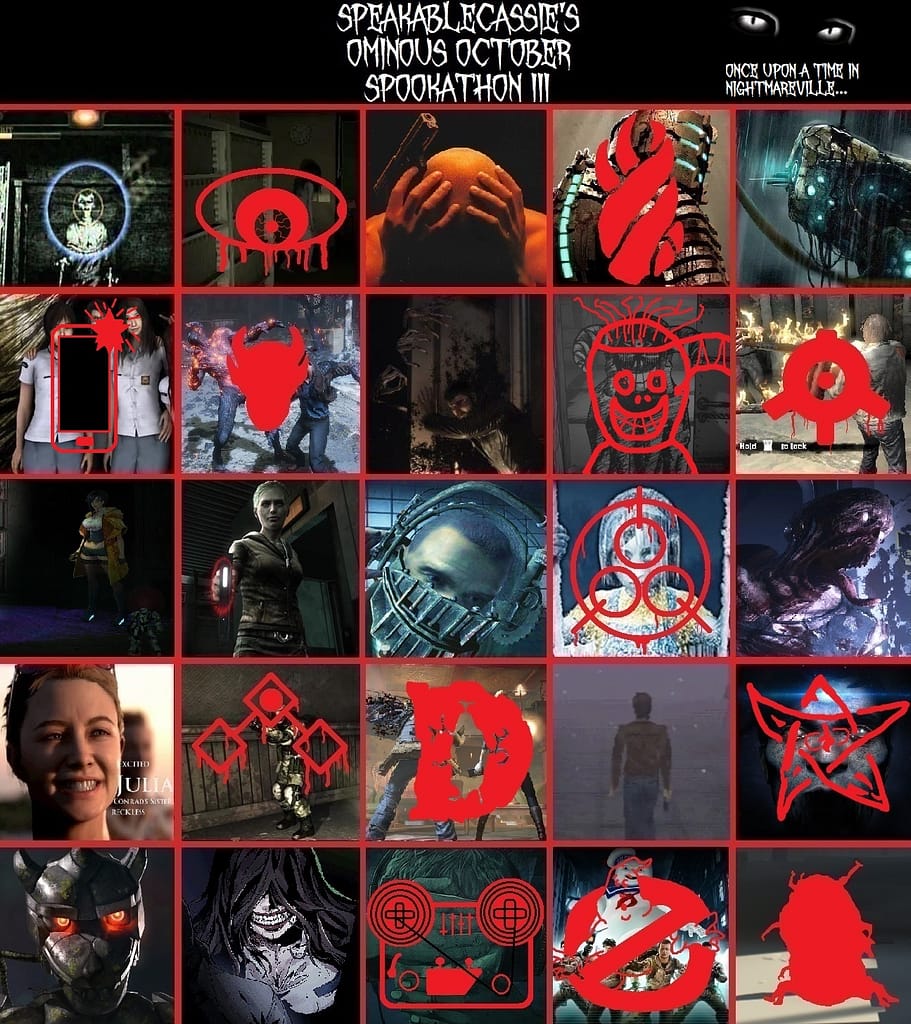
“SpeakableCassie’s Ominous October Spookathon III: Once Upon a Time in Nightmareville”, an even bigger spectacle than ever before to bring myself some much-needed joy amidst one of the overwhelming Coronavirus lockdowns of 2020. With a whopping 25 games to choose from (13 of which I managed to complete), we certainly have an awful lot to talk about. So: Let’s dive right in!
The F.E.A.R. Franchise
Row 4, Column 2
Time Played: 26 hours, 9 minutes
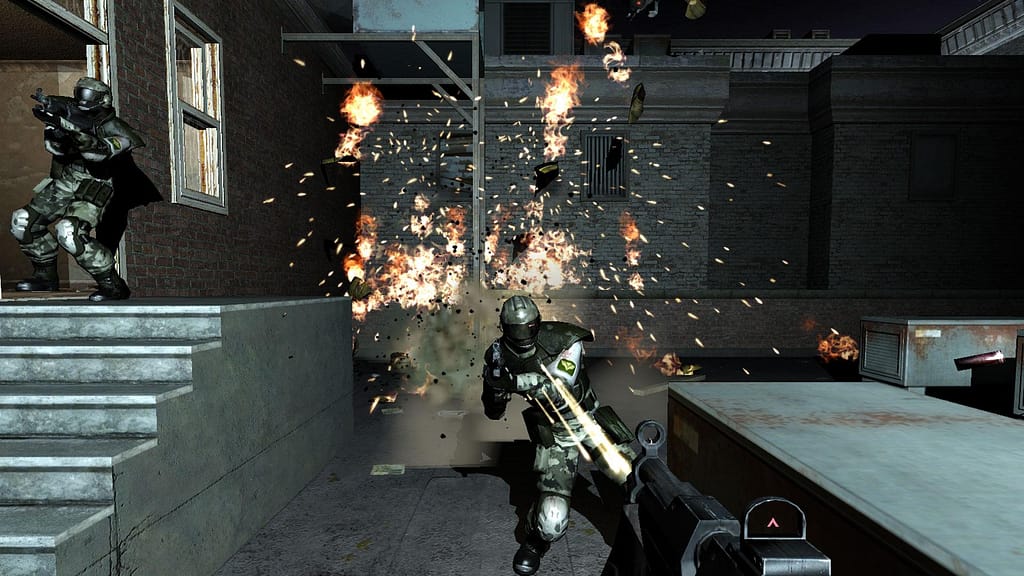
2020’s month of nightmares began with a complete playthrough of the F.E.A.R. Franchise, A series of first-person shooters with strong themes of psychological horror and a large number of jump scares. As this included not just F.E.A.R. 1, 2 & 3, but also the first game’s two expansions (Extraction Point and Perseus Mandate), this Ominous October Spookathon was starting with quite a behemoth undertaking!
F.E.A.R. stands for First Encounter Assault Recon —I know, tortuous acronym, isn’t it?— the name was given to a secret branch of the US Army that investigates paranormal and supernatural occurrences all throughout America. You take on the role of Point Man, a rookie who is tasked with stopping a powerful psychic named Paxton Fettel. Having taken hold of a Private Military Company via mind control, stopping Paxton will be no easy feat, especially with extreme hallucinations hindering your progress.
Enter “Alma”, an evil entity with a ghost girl appearance, not dissimilar to a number of modern Japanese horror figures such as Kayako Saeki of the Ju-On franchise or Sadako Yamamura of the Ring series. It is Alma that brings about the majority of the horror throughout the F.E.A.R. games, jumping out when you least expect her and unleashing countless apparitions upon you. At its core, F.E.A.R. is an FPS game that borders on being a full-blown action experience at times, yet Alma’s horror inspirations cause the games to become far scarier than you might anticipate.
With traditional shooter controls and an enjoyable selection of good-feeling weaponry, F.E.A.R. excels in every aspect of its gameplay. Thanks to your time slowing abilities, the intelligent enemy AI, and the overall writing quality, The series is thrilling from start to finish. It undoubtedly rivals some of the best games in the horror FPS subgenre from within its console generation, such as Bioshock, Prey (2006), and Condemned: Criminal Origins. Unfortunately, there’s one stand-out exception to this statement…
Whilst F.E.A.R. and its expansions and direct sequel are all excellent games, F.E.A.R. 3 completely fails to live up to their standards. Through a heavy co-op focus and a distinct lack of horror, F.E.A.R. 3 feels like a game plucked from an entirely different franchise, with a loosely related plot glued on. The three-and-a-half-hour-long, action-oriented campaign that it has to offer does little to evolve upon the series’ prior mechanics, nor does it feel like the definitive conclusion that the overall narrative deserved.
Regardless, the F.E.A.R. franchise was —for the most part— a great horror-themed start to the Spookathon, with its final game being its only real fault. But my Ominous October events are about far more than a handful of jumpscares and some less than spooky combat. They’re also about those spine-tingling games, which chill you right to your bones thanks to their incredible sense of atmosphere; The likes of which laid right around the corner…
Ju-On: The Grudge – Haunted House Simulator
Row 1, Column 2
Time Played: 4 hours, 23 minutes
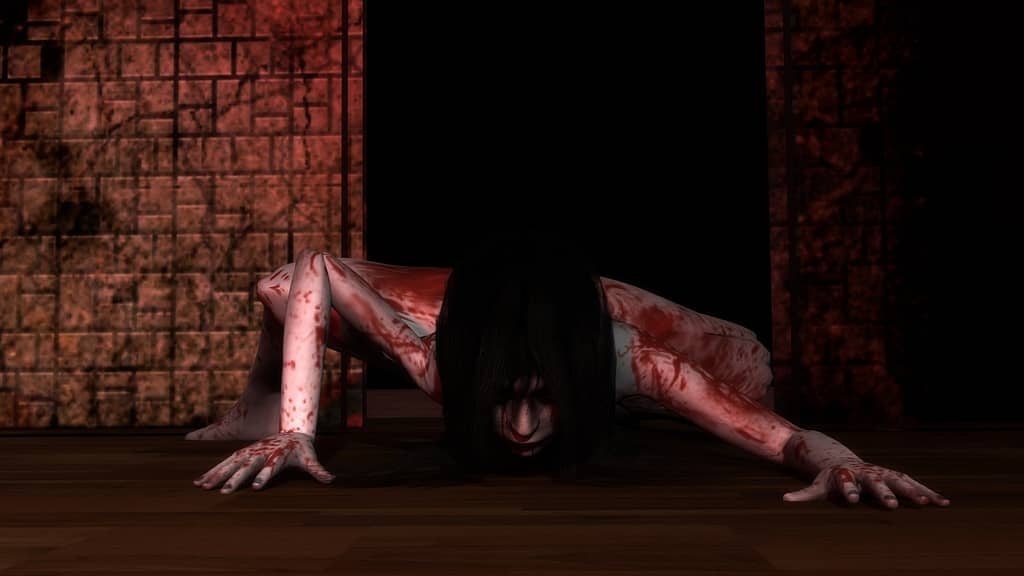
Ju-On: The Grudge is a 2009 Nintendo Wii game created as a tribute to the Ju-On series for its tenth anniversary. For those that don’t know: The Ju-On movies chronicle the downfall of a number of unsuspecting people who have crossed paths with a particularly cursed house in Tokyo. Within that house, Kayako Saeki and her son Toshio were the victims of an extremely violent murder, and their spirits have claimed the lives of anybody who has set foot in the building ever since; Living on through the power of Kayako’s grudge against her killer.
It’s a simple premise, usually told through anthology films about several different victims who end up at the house. I’d happily call Ju-On one of my favourite horror movie franchises of all time, and I’d recommend it to just about any given horror fan! But that’s beside the point, as the official video game is our focus here. It’s actually quite a fitting experience, as it was also the first game that the Super Best Friends played in their S**tstorm of Scariness event, way back when!
Using the motion controls of the Nintendo Wii Remote, players turn their character and aim a flashlight as they walk through five extremely atmospheric horror locales: A run-down warehouse, a hospital, an old mannequin factory (I’m not even joking), an abandoned apartment complex and of course, the Saeki residence itself. Along the way you’ll need to find keys, complete objectives, and endure Quick Time Events, all against the time limit of your flashlight’s limited battery life.
To say it’s an intense experience would be quite an understatement. To see Kayako’s contorted movements whilst staring into her hate-filled eyes or to hear the piercing wail of Toshio’s cat-like voice; All of it feels so authentic and passionately designed. It’s the most immersed I’ve ever felt in a Wii game and lived up to every expectation I had for it as a long-term fan of the series.
Unfortunately, there is one downside, and it’s quite a big one… The Saeki Residence level is locked behind a pretty brutal prerequisite, as you must find a number of very well-hidden collectibles throughout the first four levels before you can actually unlock it. These don’t even glow like every other pick-up in the game does, and it can feel pretty unfair at times… That is an entire fifth of the game’s content locked behind secret-hunting, after all, and many players won’t have the patience to put up with it. As such: It’s hardly a game I can recommend to everybody.
Dead Space
Row 1, Column 4
Time Played: 18 hours, 2 minutes
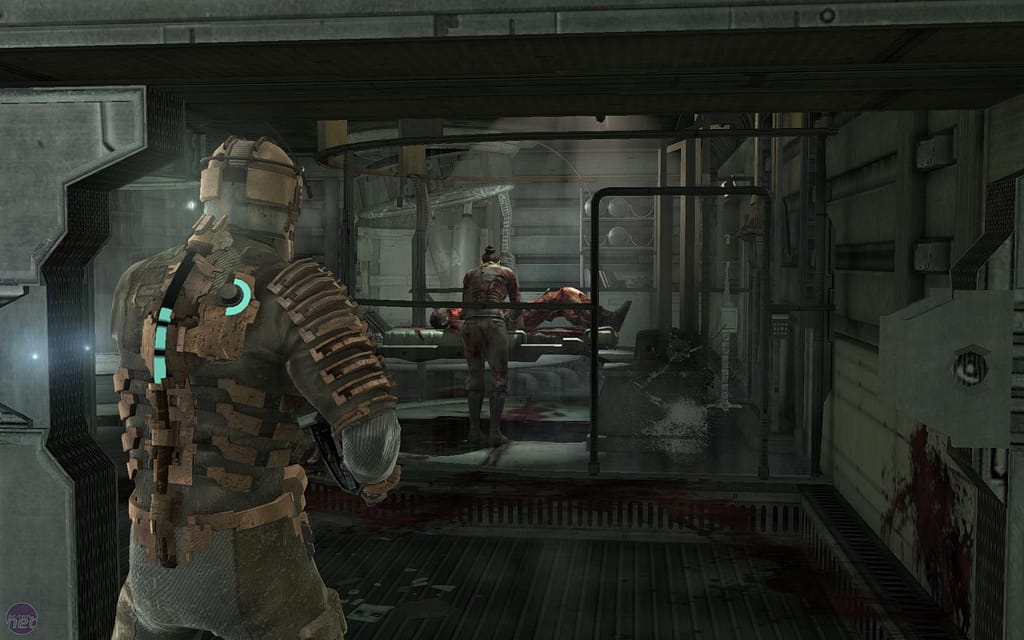
Next up on the docket was the original Dead Space, the first game on the list to be played by my fiancée, PrincessLilyMTG. I feel quite confident that most readers will already be familiar with Dead Space, given the huge popularity it saw upon release back in 2008. Whilst I view Dead Space 2 to be one of the best Survival Horror games ever made, the first also proves to be an enjoyable time and time again, having held up extremely well over the past decade and a half.
Isaac Clark’s journey through the USG Ishimura mining ship is a tale as old as time: Boy meets girl, girl gets a job on a spaceship, spaceship becomes overridden by alien monsters, monsters must be slaughtered so that boy can save the girl. Okay, so maybe it’s a little unorthodox, but the twists and turns of Dead Space’s overall story, alongside its extremely tight Resident Evil 4-inspired gameplay, has solidified its place in the horror hall of fame.
And after all this time, it still genuinely holds up! There are some technical issues in the PC version of the game when running on modern systems, but the actual content on offer here is still of high quality. Necromorphs are still profoundly terrifying, the levels are intricately designed to make you feel lost even when you know exactly where to go, and each resource is just scarce enough to keep the tensions high without ever leaving you defenceless. It’s honestly still impressive to this day, albeit not on a graphical level.
Of course, that may well be changing soon as Dead Space is currently being remade from the ground up by Motive Studios, the team that developed Star Wars: Squadrons. Although they may not have demonstrated their quality when it comes to horror as of yet; If they remain faithful to the original game whilst applying a shiny new layer of enhanced graphical fidelity and a fresh control scheme, then Dead Space may well be reinvigorated for a whole new generation of horror gamers.
Hell, if the remake does end up being good, then perhaps one day we’ll see this game back on the Ominous October Spookathon list, to be played through once again!
Alone in the Dark (2008)
Row 2, Column 5
Time Played: 5 hours, 38 minutes
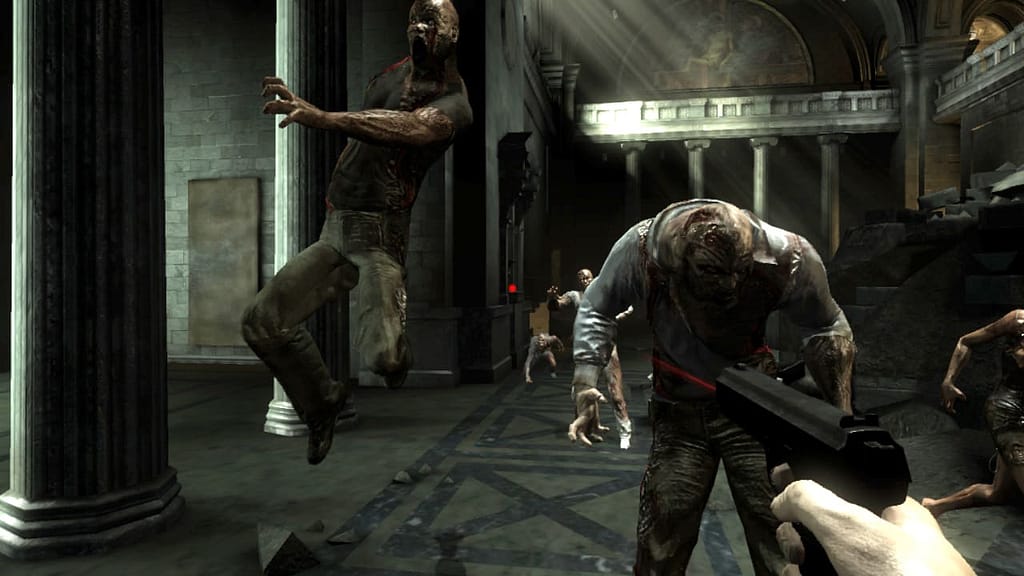
Sadly, here comes the first game of this year’s Spookathon that I cannot recommend at all. I first played Alone in the Dark at launch on the Nintendo Wii, where it stood out as the one and only game that I couldn’t beat under any circumstances. With controls that were clunky at best, physics-based puzzles that usually didn’t function properly, and a progress halting mechanic that screws you over during the very last act of the game: Alone in the Dark 2008 is indeed nightmarish, but for all the wrong reasons.
First off, let’s get some much-needed context. This instalment of the AitD franchise serves as a soft reboot to the story, wherein our amnesiac protagonist Edward Carnby must endure a cataclysmic event in the centre of New York City. Along the way, he must contend with a group of Occultists and their plot to use the fabled Philosopher’s Stone to summon Lucifer himself.
As if that wasn’t bad enough, Edward must also battle countless demonic enemies in both first and third-person combat. There are vehicle sections, puzzles, melee weapons, in-depth healing mechanics and even a dedicated button to make Edward blink if he gets gunk in his eyes. Overall it’s a schlocky, kind of silly concept with a whole lot of mechanics crammed into it, but that doesn’t make it bad by default. What makes it bad is the execution of these ideas, which is dreadful at the best of times.
The gunplay doesn’t work because it feels floaty and unimpactful; Nigh impossible to aim from a third-person perspective and equally bad in first-person due to how often Edward’s vision becomes blurred, forcing you to blink. The vehicle sections feel more like maneuvering an old lawn mower than driving a car, which also isn’t ideal. Melee weapons bounce off of enemies without impact, puzzle items can get stuck in unreachable areas due to their physics, and the healing mechanic is relentless; Throwing injury after injury your way, with very few resources to treat them.
But AitD 2008’s biggest issue regards a progress blocker. Much like how Ju-On: The Grudge locked its final level behind several collectables, Alone in the Dark requires you to destroy “roots of evil” hidden throughout the game in order to increase your “spectral vision” meter before you can reach the ending. But this isn’t just a dozen or so collectables like in Ju-On; This is seventy-five collectables that you must scour the game for —across hours of extra gameplay— just to see the credits roll.
Even whilst actively searching for these roots of evil, I reached the end of the game with only 34 of them destroyed, meaning I was faced with a difficult choice. I could either go back through the entire game in order to collect the rest of them, or I could watch the game’s ending on YouTube… So I guess I still haven’t beaten AitD 2008 after all this time.
But I think I’m okay with that.
As a series, Alone in the Dark has always been troubled. The original trilogy —whilst entertaining— has aged rather poorly over the years, with none of them being particularly accessible through modern gaming platforms. The fourth game, AitD: A New Nightmare, is still playable today and is a high-quality experience thanks to its Resident Evil inspirations, but it feels like an outlier rather than the series’ norm. AitD 2008 is messy at the best of times as described above, and 2015’s AitD: Illumination is an even bigger train wreck…
So to say that I’m concerned about the state of the upcoming series reboot would be a huge understatement. I intend to keep my fingers crossed and hope they’ve learned something from the numerous horror game success stories that we’ve seen over the past few years. Recent trailers suggest that it has been directly inspired by the remakes of RE2 and RE3, so there’s certainly potential there, at the very least. But whatever the outcome may be, it certainly can’t be as bad as 2008’s travesty.
DreadOut
Row 2, Column 1
Time Played: 4 hours, 29 minutes

Moving swiftly on: the Indonesian Survival Horror game DreadOut was next in the spotlight. It follows the story of a group of high school students who become trapped in an abandoned town full of ghosts midway through a school trip. Stepping into the shoes of a student named Linda, you quickly learn that you can defeat the aforementioned spirits using your smartphone’s camera and must face them head-on if you want you and your classmates to leave the town alive.
Honestly, there isn’t too much to be said about this one. It’s a competent horror adventure with a lot of good scares and a basic take on the gameplay mechanics of the Fatal Frame / Project Zero series. I had a lot of fun playing through it and taking in the atmosphere, but the story doesn’t do anything particularly unique, and the gameplay is a little too repetitive to sustain its short campaign.
One big piece of praise I have for DreadOut, however, is in regards to just how varied its collection of ghosts is. There are over 40 ghosts to be encountered here, each accompanied by in-depth folklore about their authentic origins within Indonesian culture. It’s a fascinating look into another country’s horror mythology, much like The Coma: Recut and White Day: A Labyrinth Named School before it. I’d say that’s worth the price of entry alone.
Devil’s Hunt
Row 2, Column 2
Time Played: 5 hours, 57 minutes
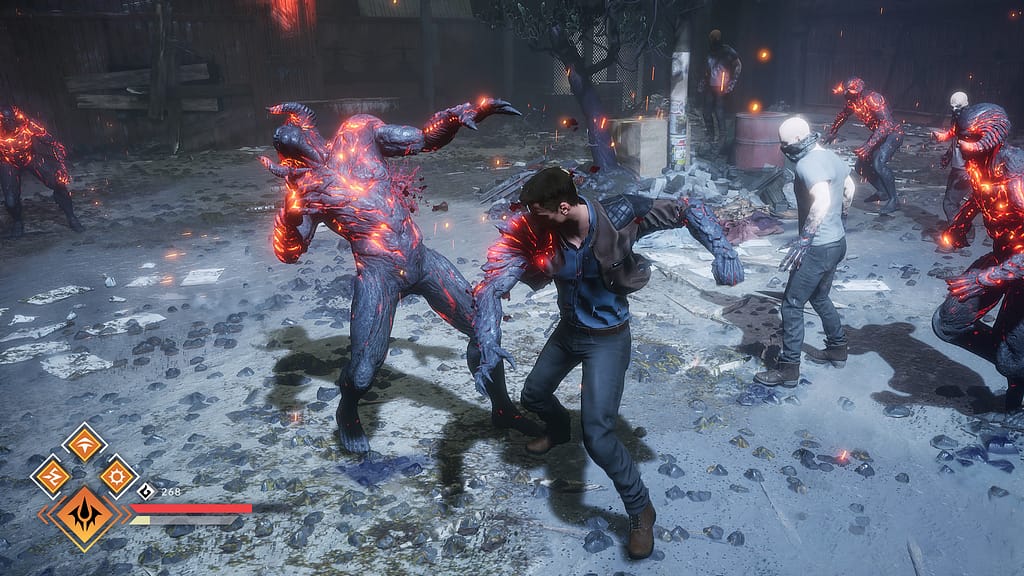
On a completely different note, along comes Devil’s Hunt: An utterly absurd game of the “so bad it’s good” variety! This is the tale of Desmond, a down on his luck rick kid who, through completely random happenstance, becomes a half-man half-demon executor for the powers of Hell… Whoops!
Devil’s Hunt is a very generic third-person hack and slash game that attempts to match the high-octane gameplay of spectacle fighters like Devil May Cry and God of War but cannot live up to their quality due to a simple lack of budget. You fight demons, you unlock new abilities, and you explore some fairly linear areas, but that’s about it… Gameplay isn’t the game’s main attraction, admittedly. What clicked with me here was Devil’s Hunt’s absolutely insane story.
Desmond is living the high life as a millionaire in a giant mansion, but his father —who might also be his boss?— hates him with a passion. Thankfully, Desmond doesn’t care: He’s going to show his father up by proposing to his girlfriend and winning his next big boxing match at the local fighting ring! He’s got it all planned out, and honestly: How could anything go wrong in a game specifically about the forces of Hell?
Well, Desmond proposes to his girlfriend, and she says yes! But there’s no time to celebrate; He’s got to rush off to his big fight instead. Sadly, he gets immediately defeated by his opponent, whose coach is clearly a demon in disguise. As such, his plans to show up his dad have been ruined, A point made doubly clear when his father visits him to gloat before Desmond has fully regained his consciousness.
Afterwards —though only a few minutes later— Desmond heads home and immediately walks in on his brand new fiancée having sex with his best friend! So, obviously, his next plan is to chase after his former friend with the intention of murdering him. This proves to be a not-so-simple task, as in the midst of a struggle, Desmond is promptly knocked out.
Upon regaining consciousness for a second time that night, Desmond uses his sports car to chase after his former friend but somehow manages to instantly crash through the barrier of a bridge and down into the river below… Luckily, he survives but is then coincidentally killed by the demonic coach he saw earlier in the night, who sends him straight to Hell with magical powers because… Of course, he does. Sure.
Now, that may not sound all that crazy, but every one of these events takes place within the first thirty minutes of the game, with absolutely no regard for pacing or context whatsoever! Furthermore, the story only gets crazier and faster with each additional scene, causing the game to devolve into consistent hilarity every few minutes, Particularly when paired with its painfully mediocre voice acting.
Truthfully, I can’t speak for the novel ‘Equilibrium’ upon which this story is based, but Devil’s Hunt as a game is extremely enjoyable for all the wrong reasons. All I can suggest is that you pick it up the next time it goes on sale and prepare yourself to laugh like there’s no tomorrow.
My Beautiful Paper Smile
Row 2, Column 4
Time Played: 3 hours, 42 minutes
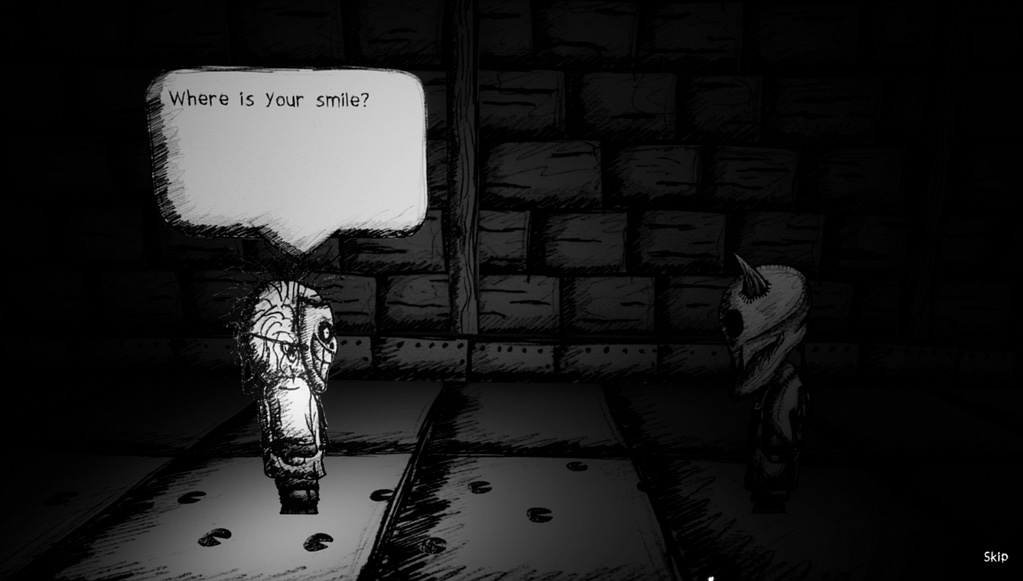
Now here’s something of an unusual one. My Beautiful Paper Smile is an odd horror adventure game that launched in Early Access back in 2020, with only its first two chapters available to be played. Since then: Chapters three and four have been released, (rendering the game fully finished), along with a free prequel game titled “Night in Riverager”, which came out in early 2021.
At the time of the third Ominous October Spookathon, I chose to play both of the Early Access chapters and simply ticked the game off of my list. But you can rest assured that I have indeed played the remainder of the game’s content since then, alongside its prequel. I must say that I was genuinely quite impressed by how Two Star Games handled their Early Access period: Providing plenty of development updates and lore discussion blog posts along the way.
Anyway, the surreal universe of My Beautiful Paper Smile is extremely difficult to describe, and learning about it is a big part of the charm in and of itself. As a result, I won’t be discussing it in any particular detail. I’d recommend you just pick this one up in a sale and simply enjoy the experience. It’s pretty short, has beautiful hand-drawn graphics, and is filled with a light blend of puzzles, exploration and simplistic combat. It’s a fascinatingly bizarre and unique horror narrative, so it’s worth your time if you’re willing to give it a shot.
Silent Hill: Shattered Memories
Row 3, Column 4
Time Played: 8 hours, 43 minutes

Ahh, Silent Hill. A series with a tortured history that has seen plenty of incredible and atrocious games alike. I’m happy to say that Shattered Memories is definitely one of the good ones and is, in fact, my favourite Silent Hill game of all time. It was released for the Nintendo Wii back in 2009 and had a very late PS2 and PSP release the following year. Admittedly it doesn’t play like a typical Silent Hill game, given that it does not feature any combat, but the puzzles, tone and unique mechanics it offers are special enough to really make the game stand out.
Shattered Memories is a psychological horror game in every sense of the term, as it utilizes several basic psych tests and observations in order to profile who you are. This results in changes to large aspects of the visuals and story, Determined by how you act, answer questions, and what visuals you most regularly observe within the environment.
For example: If you often find yourself distracted by sexual imagery in posters and advertisements throughout the game, Staring too long will result in the core themes of Shattered Memories changing to become more sexualised too. This is demonstrated with simple changes seen in character outfits and enemy designs and in more substantial changes such as how other characters treat the protagonist and how he treats them.
Or perhaps you decide to put the game’s main objectives at the back of your mind and opt to mess around for a while instead; Examining movie posters, not taking questions seriously, or playing with trivial items found throughout the environment for extensive amounts of time. This would result in other characters perceiving you as being weak-willed and actively judging you to be a deadbeat. It’s a remarkably creative mechanic that —whilst a little limited in the grand scheme of things— adds a very personal touch to each playthrough and is guaranteed to leave you feeling a lot of conflicting emotions by the time the credits roll.
Gameplay revolves around an interesting blend of exploration, logical puzzle solving, and chase sequences that are sure to get your heart racing. Yet the narrative is Shattered Memories’ sole focus and is where it excels the most. PrincessLilyMTG and I had an incredible time playing through this one, particularly due to the discussions that each psychological quandary made us contemplate. I recommend a lot of the games in each of these Ominous October Spookathon lists, but this is my biggest recommendation by far.
NeverDead
Row 4, Column 3
Time Played: 9 hours, 40 minutes
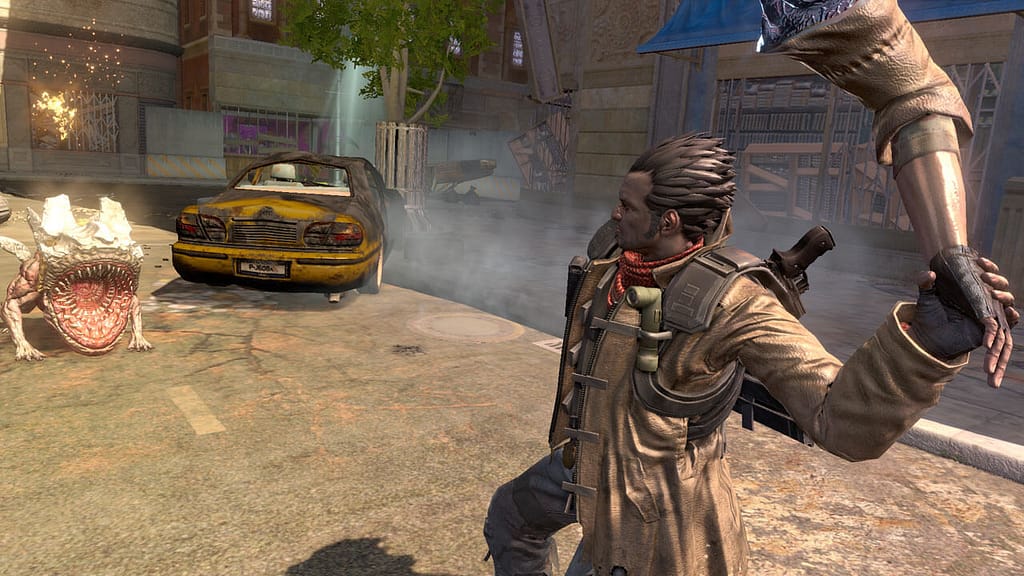
Tonally contrasting with Silent Hill: Shattered Memories is Konami’s 2012 hack and slash shooter, NeverDead. Though based around the horror concepts of demons and the undead, NeverDead is much more of an action game with light comedy elements rather than a full-blown horror experience. Players take on the role of professional demon hunter and jokester Bryce, who must bare the burden of immortality.
Through a non-stop onslaught of demons and monsters, Bryce must defeat a horrific army which threatens to destroy his city, all whilst searching for revenge against the demon lord that killed his wife. It’s another simple framework that lends itself to a gameplay focus, but this time around, the gameplay is built upon a core gimmick.
Being immortal, Bryce is capable of sustaining countless wounds that result in dismemberment and decapitation, but when any of these occur: You do not encounter a game over screen… Did you lose an arm? Well, you can only shoot one pistol at a time now, or perhaps you could pick up that severed arm and use it as a melee weapon! Did you lose a leg? Well, now you’ll have to hop everywhere you go and will rag-doll whenever you try to jump! Need to get into a vent that’s too small for you? Why not cut off your own head and throw it inside, so you can roll around like a bowling ball!
It’s all very silly, but it is equally entertaining… At least for a while. The gameplay may be good, but standing at 7 to 10 hours in length: The novelty does wear off a long time before NeverDead comes to an end. Simply put, the game’s mechanics aren’t quite enough to carry a player through a campaign of that size, and the story and humour aren’t fleshed out or funny enough for it to fall back on. It’s definitely a mixed bag as a result, but NeverDead will certainly provide some enjoyability if you’re feeling nostalgic for third-person shooters of its specific era of gaming.
Conarium
Row 4, Column 5
Time Played: 4 hours, 1 minute
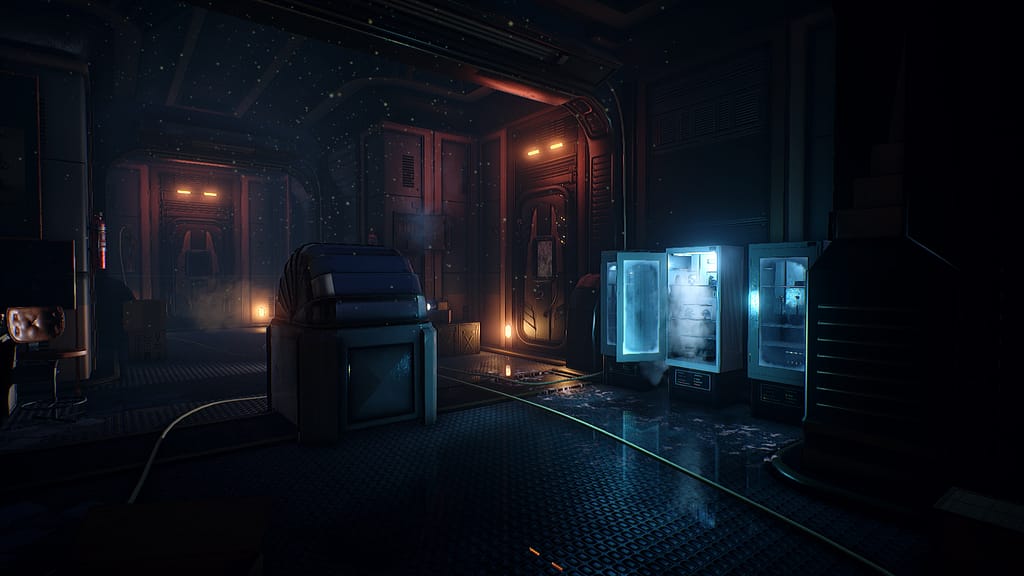
This one is really difficult to talk about… Because I don’t remember a single distinct thing about it. Don’t get me wrong; it’s not a bad game; PrincessLilyMTG and I recall it being quite a good one, as we distinctly remember enjoying our brief time playing through it. Unfortunately, I don’t think it was a particularly memorable experience in the grand scheme of things… Otherwise, I’d probably have more to say about it.
From what I recall, Conarium is a walking simulator-style game set in a Lovecraftian universe, directly inspired by “At the Mountains of Madness.” You play some kind of scientist in Antarctica who awakens to find that the rest of their expedition team has gone missing. Meanwhile, your base of operations has become populated by various artefacts of completely unknown origin.
Journeying further into the facilities and their surrounding environments, you search for answers, and whatever may remain of your crew. Alas, all I can recall from that point onwards is an awful lot of walking and plenty of document reading… Interesting documents, mind you, but again: Not particularly memorable ones. When Googling the game, I discovered that there are a number of puzzles that must be solved along the way, but any context regarding them has completely escaped me.
Honestly, I feel quite bad about Conarium. I know for a fact that there was nothing wrong with the game and that the developers over at Zoetrope Interactive likely put a huge amount of effort into making it. I can’t imagine it’s a particularly special experience, though, given that I somehow managed to forget pretty much everything about it… Perhaps I’ll have to play this one again to refresh my memory.
Inside
Row 5, Column 5
Time Played: 2 hours, 9 minutes

On a completely different note: Inside is a truly unforgettable experience. Serving as a spiritual successor to Playdead’s previous game, ‘Limbo’, Inside is an extremely artistic rendition of a deeply dystopian world. Filled to the brim with bizarre environmental storytelling and gorgeous context-sensitive animations, it creates an ambient horror tone that is guaranteed to make you feel uneasy.
Inside tells the tale of a young boy on the run from a group of armed guards for reasons that remain unexplained to us. Through countless chase sequences, puzzles and platforming —all from a 2.5D perspective— the boy traverses forests, farmlands and cities whilst evading these men. Seemingly travelling with a purpose, (though the finer details remain unclear), the boy faces countless hazards along the way.
This results in a very trial-and-error approach to gameplay. Playing as the boy, you’re pretty much destined to encounter a wide array of horrific fates through the course of your adventure, Each more disturbing than the last. You will be shot, mauled, drowned, electrocuted, crushed, blown apart, impaled, and even shredded to pieces. But there’s something about the music, pacing and good checkpointing that always drives you to pick yourself up and try and try again.
It’s not easy to talk about why you should play a game when there’s no clear story to discuss. Inside is a title that lets you observe the world around you, connect with your character, and create your own interpretation of what’s going on. For many, that will not sound appealing, but if it intrigues you even in the slightest, then I implore you to give it a go. I recommend it wholeheartedly, as it is one of the most shining examples of its subgenre.
Ghostbusters: The Video Game
Row 5, Column 4
Time Played: 5 hours, 28 minutes
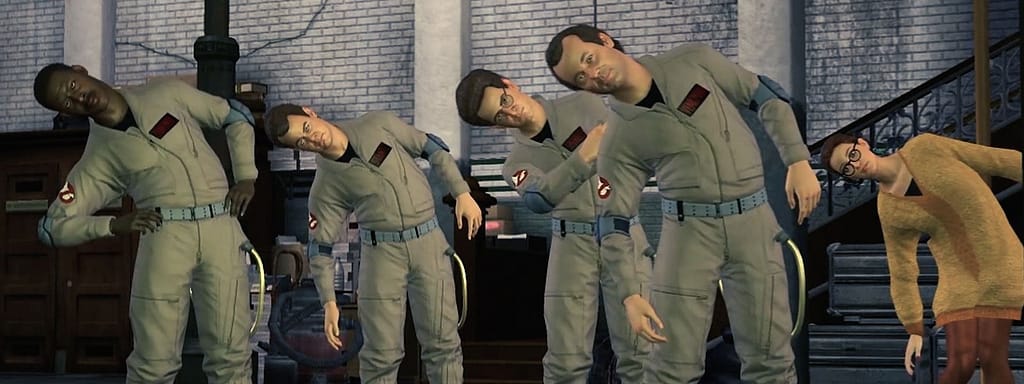
Everybody loves Ghostbusters. Maybe you don’t like the sequel, the 2016 reboot, or last year’s continuation of the main series, But everybody loves Ghostbusters. Venkman, Ray and Egon’s paranormal escapade to stop the demigod Zuul from destroying New York is a barrel of laughs and a thrill ride from start to finish. Therefore, I went into this video game adaptation with a small glimmer of hope.
With Dan Aykroyd, Bill Murray, Ernie Hudson and Harold Ramis all reprising their roles, the game certainly feels authentic; A fact bolstered by the highly detailed environments you traverse, which feel true to the time period and the stylish tech that the Ghostbusters always sported. Aykroyd and Ramis even helped doctor the script to help it feel like a genuinely new story in the franchise.
Be that as it may, many aspects of the game feel at odds with the Ghostbusters license. You play a self-insert character known only as “rookie”, who joins the Ghostbusters squad, but has no back-and-forth rapport with the main cast due to being a silent protagonist. It feels rather surreal being a part of the Ghostbusters universe but never interacting with its most important aspect: The characters.
Another weird thing about the game is just how much content is rehashed from the movies. I always loved how varied and unique the ghosts and ghouls were throughout each film, so it felt very strange encountering so many scenes that I’d seen before but had been given new context for the purpose of the game. You fight through the New York library again, go up against Slimer again, fight the Stay-Puft Marshmallow Man again, and cross the beams to save the day, again. Encountering brand new situations alongside the core team could’ve made this quite a special adventure, but I digress.
It all plays fine, utilizing fairly traditional third-person shooter controls and a nice variety of equipment throughout, but something about it feels very uncanny valley. It definitely looks like Ghostbusters, and it definitely sounds like Ghostbusters too. You get to do a lot of the things that the Ghostbusters did in both of the original movies… Yet it never feels like you’re actually in the world of the Ghostbusters. It feels more akin to just sitting at the sidelines, watching an interactive highlight reel out of the corner of your eye, whilst never truly getting immersed in the experience. A real shame, honestly.
Unheard
Row 5, Column 3
Time Played: 4 hours, 58 minutes
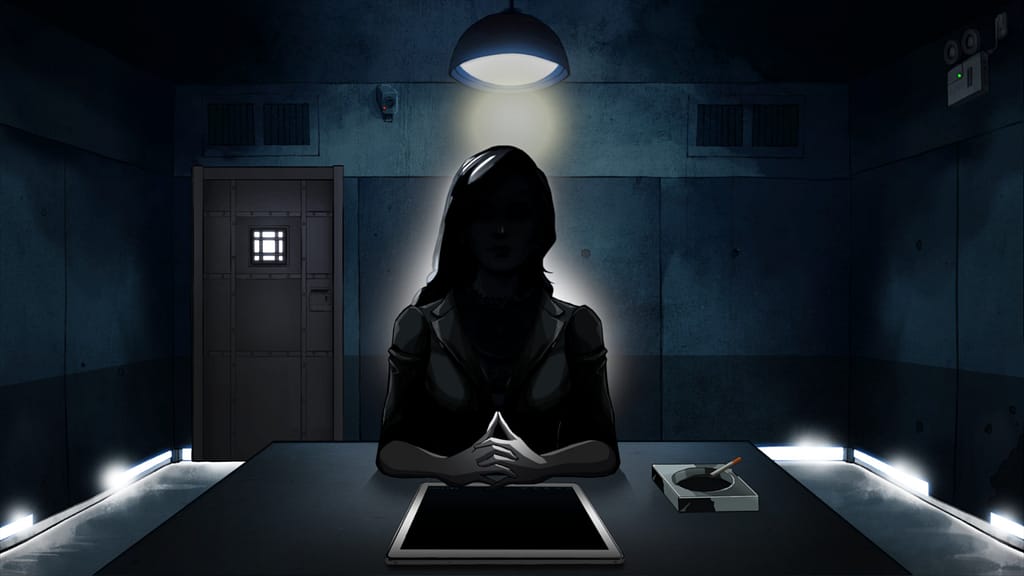
This final game of the third Ominous October Spookathon was an absolute delight to play. I’d confidently say that it’s the most unique game to ever feature in one of my Spookathons, but unfortunately: It isn’t much of a horror game. It’s far more of a thriller than anything else, and though I thoroughly recommend it, you’ll be disappointed if you go into Unheard expecting any good scares.
Nevertheless, Unheard is a genius video game. In it, you play as an “Acoustic Detective”, given five different maps to interact with via a tablet device. By observing these maps, you can listen to a few minutes of audio leading up to a crime taking place, Localizing the sounds you hear on a room-by-room basis. Your task is to answer a number of questions by listening to this audio, deducing who committed each criminal act whilst trying to uncover a deeper conspiracy through sound and sound alone.
It’s a deeply inventive concept that relies upon a player’s perceptive nature to progress its story. It’s fun to play, and the narrative is absolutely excellent, with many twists and turns to catch you off-guard and help you to feel intelligent. It can be intense, satisfying, intriguing and memorable, but it’s never frustrating. A clear answer is always just around the corner if you’re willing to take your time and investigate thoroughly.
Wonderfully, this last game is one I would recommend to just about anybody, horror fan or not. It was an incredible note to end the Ominous October Spookathon on, and is one I would love to see a sequel to sometime in the future.
Conclusion
Sadly, that brings us to the end of SpeakableCassie’s Ominous October Spookathon III: Once Upon a Time in Nightmareville. Phew, that was a lot, huh? Thankfully, we got to play and talk about a huge variety of horror games throughout it, celebrating the spookiest month of the year in the very best way that a gamer can.
Both of the first two Ominous Octobers felt like something of a roller-coaster. There were highs and lows in both game quality and player emotions as a result, but both events were still deeply enjoyable from start to finish. This third one, however, felt very different for me. There were a couple of mediocre games here and there, sure, but the vast majority of 2020’s horror celebration was an absolute delight to experience and is one I’ll surely cherish for years to come.
But mark my words: This is not the end! 2021’s fourth Spookathon was even bigger, and 2022’s event is already in full swing! There’ll be plenty more articles in the future to satiate your blood lust and keep you on the edge of your seat. But for now: Happy October, everybody! Be sure to check under your bed tonight, for the spookiest season of all is truly upon us!